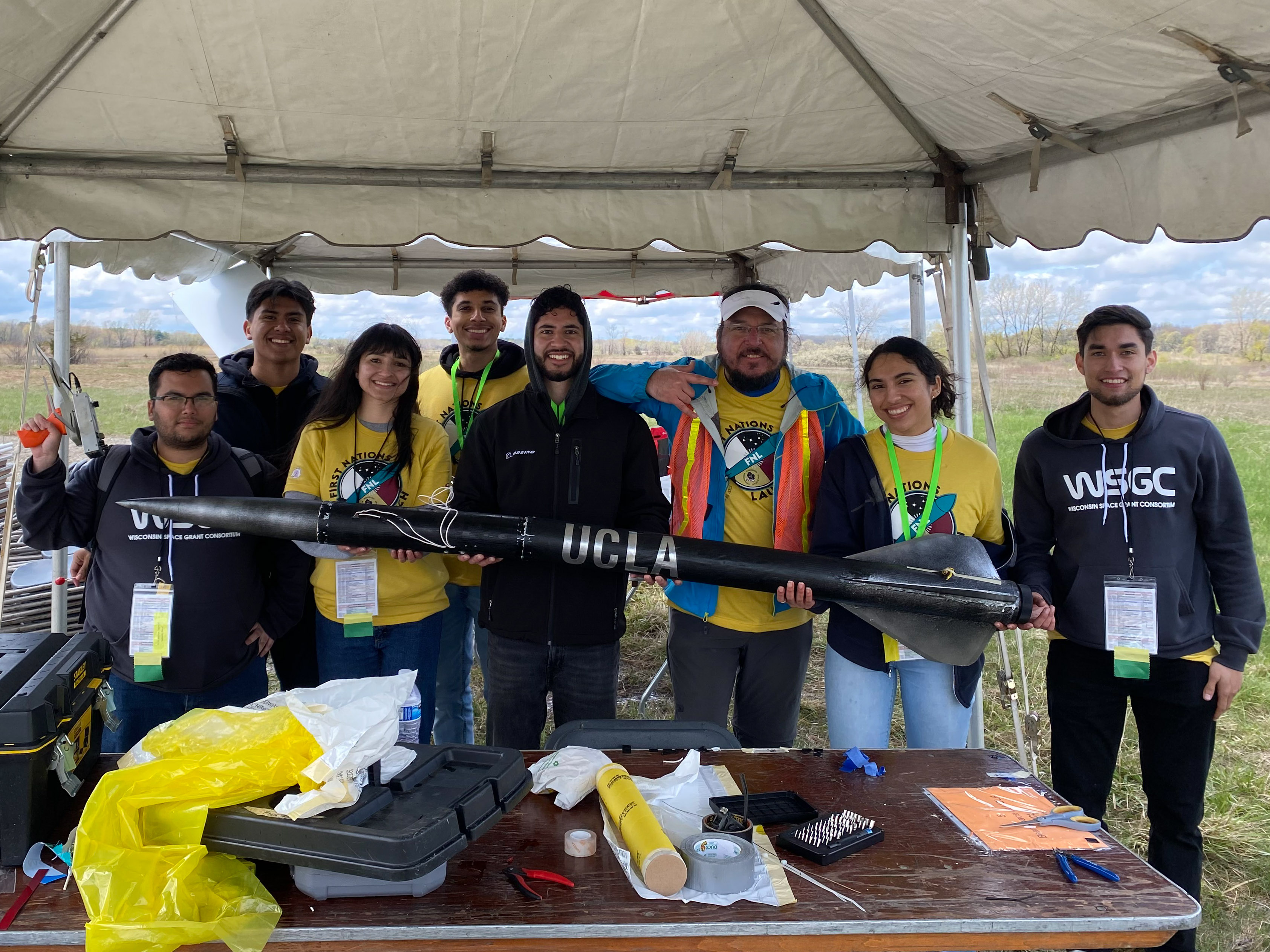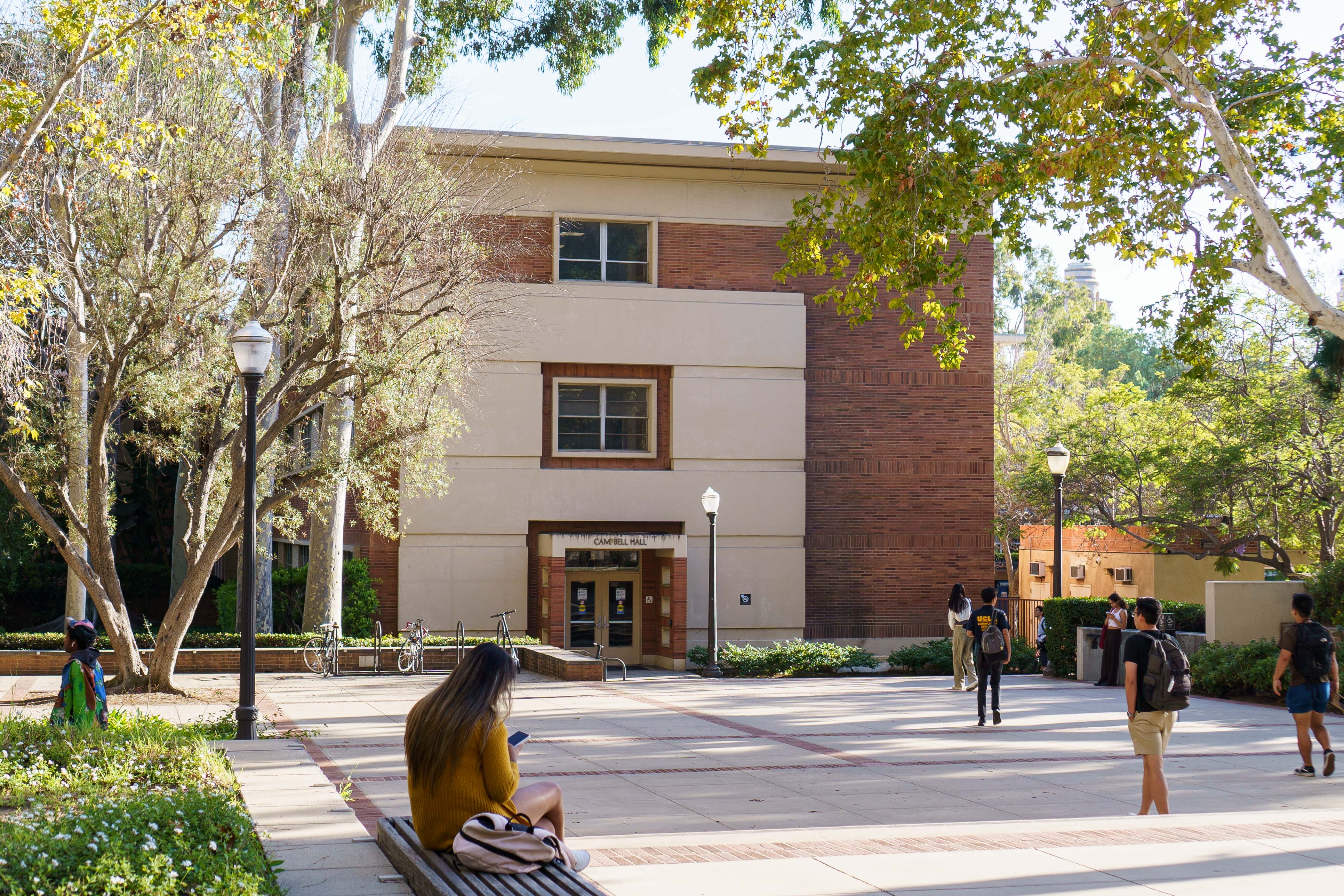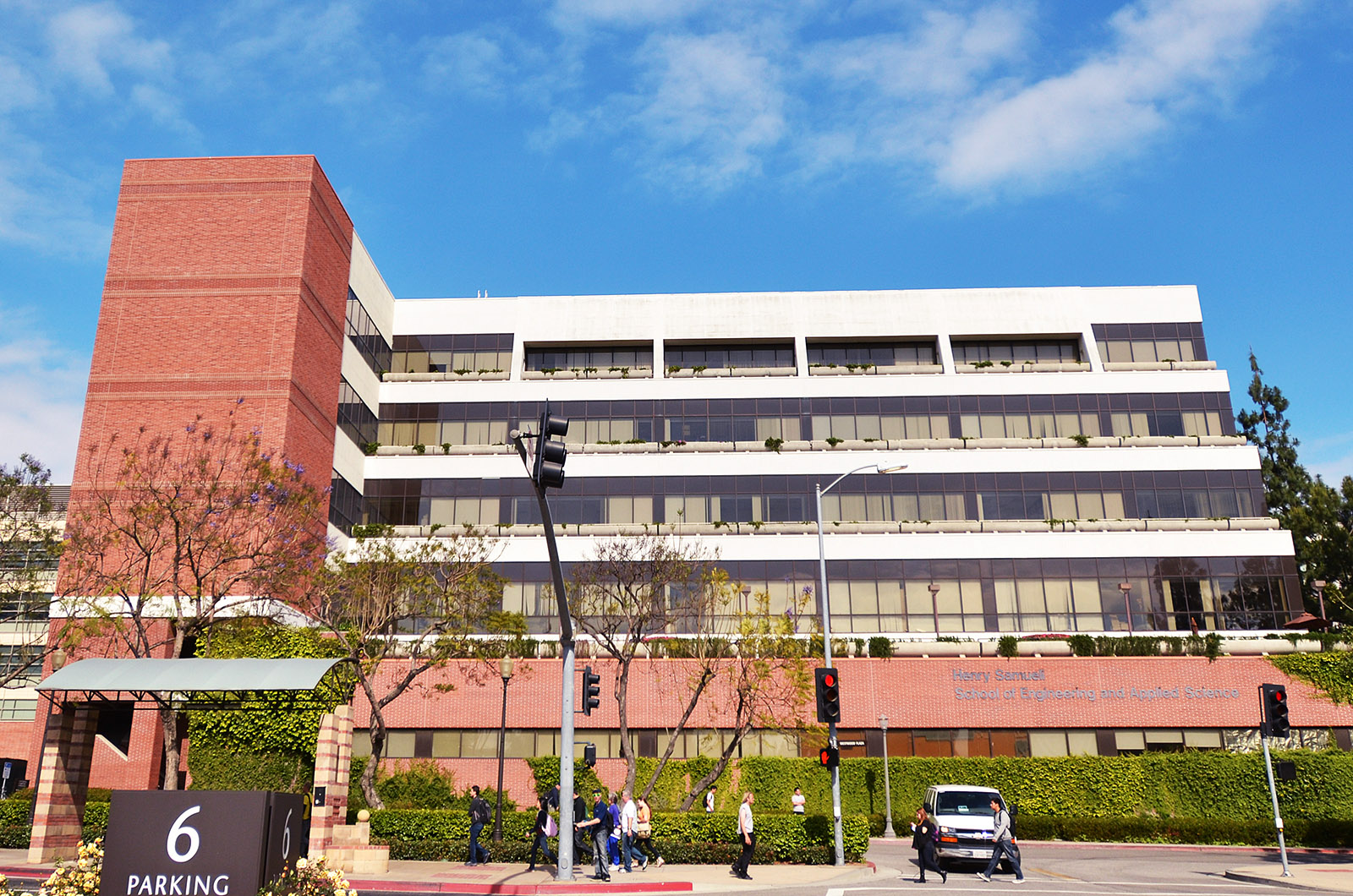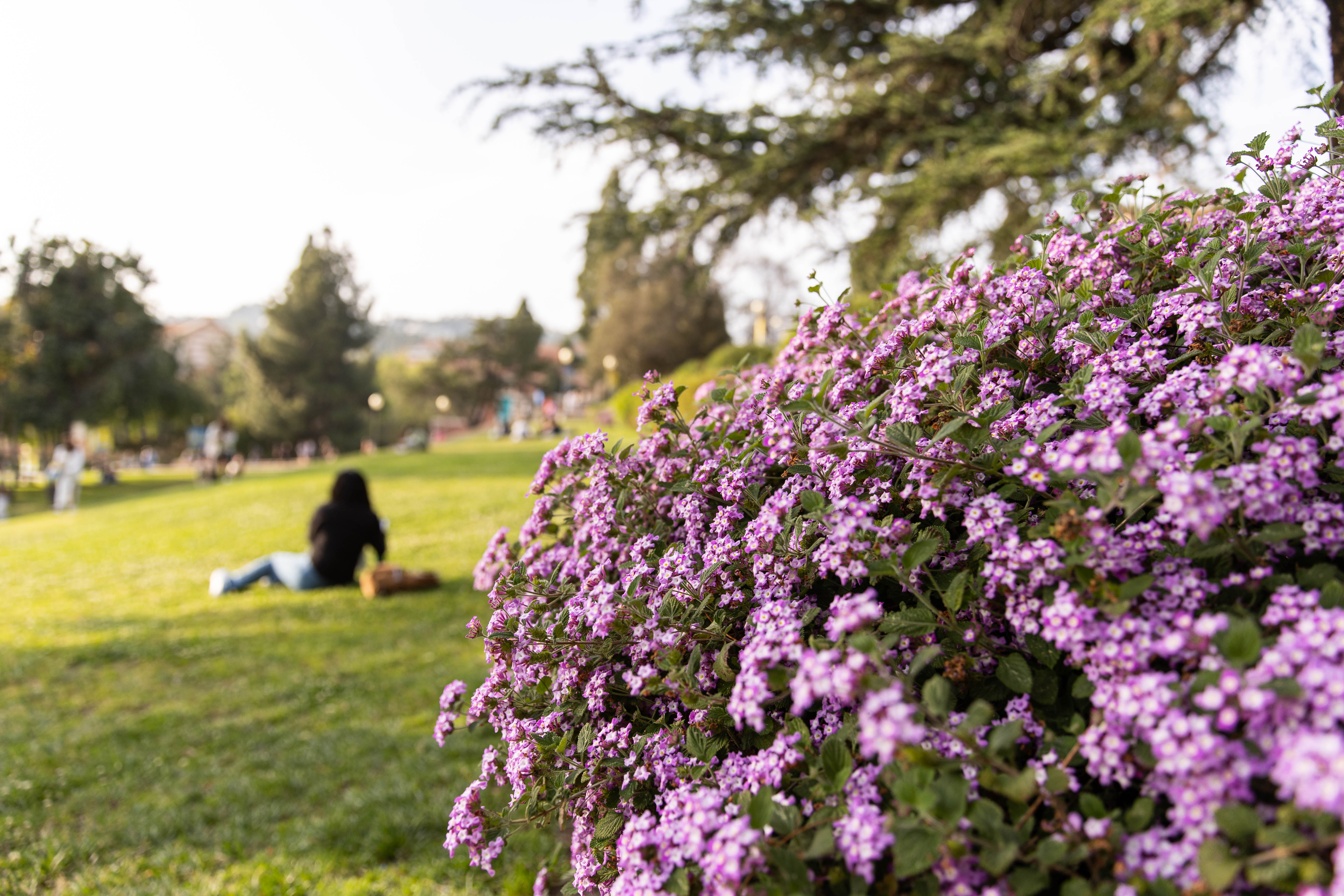Through Bearospace, AISES students build rockets and engineering careers

Members of the UCLA Bearospace rocket team are pictured holding a rocket they built. The team participates every year in the NASA First Nations Launch competition. (Courtesy of Fabian Del Villar)
By Zoya Alam
Jan. 11, 2024 10:39 p.m.
Laura Gonzalez felt her heart sink as she waited for her team’s rocket to deploy a parachute during last year’s NASA First Nations Launch competition.
The parachute never appeared.
“It was probably the worst year,” she said. “I want to make sure it’s working this year. I’m pretty sure we’ll have a good comeback.”
Gonzalez, a fourth-year electrical engineering student, is the electronics lead for the UCLA American Indian Science and Engineering Society’s rocket-building team, also known as Bearospace. The team participates in NASA’s annual First Nations Launch competition – which is held in April – where Native American students from about 30 schools plan, build and launch their own rockets.
Gonzalez said the competition provides AISES students with the opportunity to get more involved in engineering, with no experience required to join the team.
“The main reason it (Bearospace) was started is just so we could spread more opportunities for engineers that were considered minorities,” said Fabian Del Villar, the team’s project manager and a third-year mechanical engineering student.
In preparation for the competition, the team leads various workshops that teach students about a variety of rocket-related subjects, ranging from an introduction to rocket terminology to an event where students can use a rocket simulator program to gain a sense of rocket testing, Gonzalez said.
“So part one and part two, just getting people comfortable and used to the idea of … tools and electronics we’ll be using inside the rocket,” she said.
Team members plan their rocket designs in fall quarter, manufacture the rocket in winter and launch in spring, Gonzalez added.
Gonzalez said each year’s competition poses a different challenge in the building process. Last year, students worked to optimize rocket weight, whereas this year, students are working to create a deployable drone attached to the rocket, she said.
Gonzalez added that the team is focusing on perfecting the system that allows the rocket to release the drone by making sure the rocket’s avionics bay – a part of the rocket responsible for bringing parachutes into action – deploys two parachutes prior to landing.
“These altimeters will deploy the parachute at apogee, which is the highest point of the rocket, … and then it’ll deploy another parachute … as it’s nearing the ground,” Gonzalez said. “It’s called the dual deployment system.”
As of December, the team is in the proposal development stage, which includes making a list of parts needed for constructing the rocket. Using the $3,000 budget – $1,500 for the drone and $1,500 for the rocket – provided by sponsors including the First Nations Launch competition and Wisconsin Space Grant Consortium, the team can request the parts they need, Gonzalez said.
Once Bearospace obtains the materials and finalizes its proposal, the team will have until April to finish building prior to the rocket launch, which takes place in Wisconsin, Del Villar said.
To make this happen, Gonzalez said the students will meet throughout winter quarter to assemble different rocket parts. Gonzalez added that there are three main team leads – payload, electronics and structures – who guide the building process.
“They (the structures team) will definitely meet up on weekends. … I think they go to the machine shop to cut out the fins of the rocket, or we’ll 3D print the nose cone in the Makerspace (UCLA Samueli Makerspace).”
While only AISES members are allowed to participate in the competition, the team welcomes students from all backgrounds, said AISES president Camryn Redmond.
“We at AISES want to support the Native community as best we can,” said Redmond, a third-year American Indian studies and economics student. “But ultimately, the goal of AISES and the goal of Bearospace is to serve underrepresented communities within the UCLA campus, so we’re welcome to anyone.”
Del Villar said he is proud to see the club’s inclusivity and growth. Redmond added that she feels that Bearospace working with AISES helps to bring together and uplift the engineering and Native communities at UCLA.
“There’s not only a lack of Natives within UCLA, but obviously because of that, there’s going to be a lack of Natives within the School of Engineering,” Redmond said.
Two members of the Bearospace rocket team participated in the annual AISES National Conference, which is typically held on or near tribal land, last October, Redmond said. At the conference, students attend career fairs and have the chance to interact with companies, graduate schools and Native American professionals in different job fields, as well as participate in Native cultural events, Redmond said.
Redmond added that she thinks these professional development opportunities can help encourage and inspire Native American students to keep working toward their goals.
“What I especially like about that is that most of the companies, I would say, have actual people who were either AISES members and/or are Native themselves to really show our students that, ‘Hey, this is possible for you. You can have a role within this company, and we want to make that accessible to you,’” she said.
Gonzalez added that before the COVID-19 pandemic, the UCLA team consistently won at the competition. While she said that last year was a rough competition for Bearospace because of technical difficulties, she has high expectations for this year.
Redmond said working with Bearospace and AISES has meant a lot to her, and she hopes to continue helping team members successfully maintain the legacy of Native students at UCLA and beyond.
“Obviously, we’re (Bearospace and AISES students) all UCLA students, even though we might not be studying the same thing. We go through a lot of the same struggles when it comes to coming from underrepresented communities and navigating a UCLA environment where there’s not always people like us in classes,” Redmond said. “Being able to come together and really support each other is a big thing.”






